We’ve completed our second full rotation of the twelve classes in the Player’s Handbook, not to mention taken a deep dive into the first 5 levels of D&D’s thirteenth class, the inventive and arcane Artificer! This wave of the Class 101 series will appraise every subclass within the Player’s Handbook and break down each subclass’s strengths, weaknesses, thematic elements, and everything else a player would want to know before playing that subclass. Because of this, you will need to own the Player’s Handbook (or purchase the subclass a la carte on the Marketplace) in order to make full use of this series.
The paladin class is a role bursting with story. When you take up the mantle of paladin, you commit to being a warrior dedicated to an ideal, a cause, or even a person—and when you swear your sacred oath at 3rd level, you vow to uphold tenets that resonate within your very soul. This unflinching devotion fills you with magical power, giving you strength to uphold your vows in the face of overwhelming odds. The Oath of Vengeance is an oath of blood and steel, and it is not one to be taken lightly.
Check out other articles in the Paladin 101 series, like our broad overview in Paladin 101: A Beginner’s Guide to Divine Justice, Paladin 101: Oath of Devotion, and Paladin 101: Oath of the Ancients. If you’re interested in playing other classes, check out the entire Class 101 series.
Story of the Oath of Vengeance
“Please!” A human prostrated himself on the dungeon floor before a warrior dressed in sleek, blood-red armor and wrapped in a black cloak. The groveling crime lord had a ratty face and a phlegmy voice, and trembled before the crimson avenger who towered over him. “You’ve beaten me! My empire is in shambles, my suppliers have all abandoned me. Please let me live! You have nothing more to take from me!”
“No mercy for the wicked,” the paladin said, her voice muffled within her helmet. “Your minions have lived because I allowed them to; ordinary foes might win my mercy, but my sworn enemies do not.”
“But they yet run free!” the crime lord whined. “Think of the harm they will do, every second you waste upon me you allow them to become stronger.”
“Fight the greater evil,” the paladin recited dispassionately. “I will not waste my time trifling with lesser evils—you are my target. I admit, I have my fears. Any one of the faithless scum you employed may blossom into another tree of evil. But I must not let my qualms get in the way of exterminating the greater evil. And that is you.”
She raised her spear and her glowing eyes glinted from within her helmet. “Make peace with whatever god you give your pathetic prayers to. Beg them for mercy, for I will show you none.”
Oath of Vengeance Features
Oath of Vengeance paladins are skilled with keen blades, healing magic, and magical abilities that let them hunt down their prey. The paladin gains access to four subclass features at 3rd, 7th, 15th, and 20th level. You can read all of the Oath of Vengeance features in the Player’s Handbook. In summary, your subclass features allow you to:
- Channel your oath’s divine power to freeze a foe with fear, or mark a foe for death.
- Gain permanent access to spells that define your oath.
- Pursue fleeing creatures that you strike with an opportunity attack.
- Retaliate against creatures marked by your divine power whenever they attack.
- Temporarily transform into an angel of vengeance.
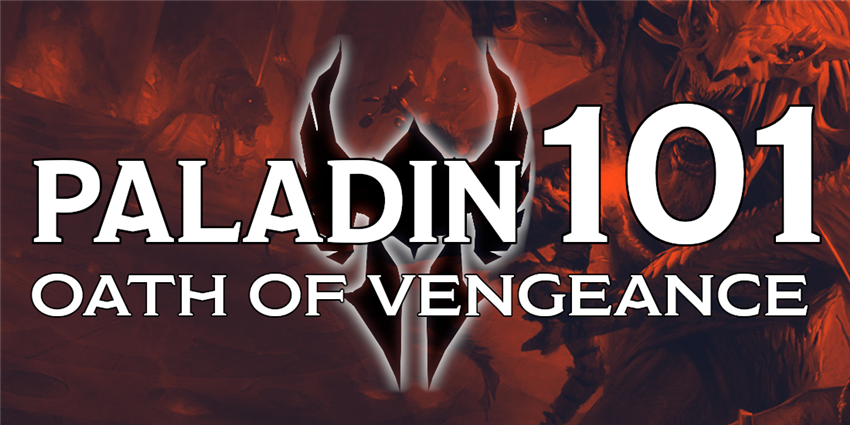
Benefits of the Oath of Vengeance
The paladin class is a very interesting beast in combat. Paladins tend to use heavy armor and other defensive class features to stoically survive damage, and then create huge spikes of damage with their high-powered Divine Smites. Then, after battle, they can use Lay on Hands to heal up any (or at least a part of the) damage they took in the fight. The Oath of Vengeance encourages paladins to play less defensively by giving them tools that allow them to apply constant offensive pressure to their enemies.
One of the most significant benefits of your paladin oath are your Oath Spells. Most of these spells come from outside the paladin spell list, meaning that these spells, in addition to always being prepared, also vastly expand your abilities. These spells mostly come from the wizard spell list, and focus on limiting your foes’ movement (e.g., hold person) while allowing you to move freely (e.g., misty step). It also grants you hunter’s mark, a powerful spell with both combat applications and exploration applications—granting extra damage whenever you hit your marked target, and making it easier to track down your target if they flee.
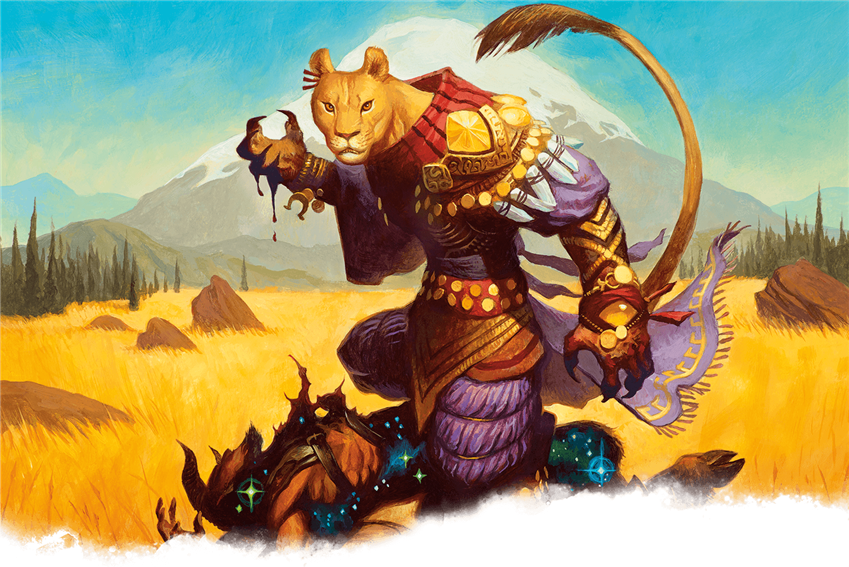
Drawbacks of the Oath of Vengeance
It’s possible to play the Oath of Vengeance in the “standard” paladin way, by saving all of your spell slots to fuel your explosively powerful Divine Smite feature. However, it can be just as useful to spend your spell slots on longer-term offensive abilities like hunter’s mark. If you try to play an Oath of Vengeance paladin like you would any other paladin, you’ll easily miss out on some of the class’s most interesting features.
Compounding this fact is the subclass’s reliance on saving throws. Many of the things that make the Oath of Vengeance stand out from the pack, including a number of its Oath Spells and one of its unique Channel Divinity options, Abjure Enemy, require your target to fail a saving throw for the feature to have any effect at all. Since you’re a paladin who wants to get into melee combat, you’re already likely to have invested in high Strength and Constitution scores. If you used point buy to generate your ability scores, you probably don’t have enough points to invest in a strong Charisma score, meaning that it will be easy for your foes to resist your spells.
Because of the power of your spells, it might be worth simply letting your Constitution score be lower than most paladins, and accepting that you’ll have low hit points. It makes sense to prioritize Strength and Charisma to fuel your physical and magical offensive powers, since this subclass focuses on hunting down foes and dealing sustained damage. And even though you’ll have to contend with lower-than-average hit points for your class, you’re still proficient in heavy armor and shields, allowing you to keep your physical defenses high, even if your Constitution is low.
Suggested Build
Like most classes in D&D, the paladin doesn’t choose their subclass until 3rd level. If you’re playing a paladin from 1st level and think you want to enter into an Oath of Vengeance later, you should choose a race that improves your Strength (or Dexterity) score and also your Charisma score. Strength affects how hard you hit with most melee weapons, and gives you the ability to wear heavy armor without penalty. Dexterity makes you better with ranged or finesse weapons, and improves your Armor Class while in light or medium armor. Your Charisma score improves a number of your paladin class features, as well as your spell save DC, which makes it harder for foes to resist your spells. Because of this, your Strength or Dexterity score should be your highest ability score, and your Charisma should be your second highest score.
While all paladins are well-suited towards wearing heavy armor and using powerful, Strength-based weapons, you can also forgo heavy armor and use finesse weapons instead by prioritizing your Dexterity score instead of your Strength score. Dexterity-focused paladins are fairly uncommon, especially compared to Dexterity-based fighters and rangers, since their powerful Divine Smite ability can only be activated using a melee weapon attack.
Dark elves make excellent Oath of Vengeance paladins, thanks to their bonuses to Charisma and Dexterity, coupled with their innate spellcasting. For a paladin who wants to focus on raw physical power, dragonborn make for excellent paladins thanks to their bonuses to Strength and Charisma. If you aren’t too concerned with your spellcasting abilities, races like dwarf and half-orc help make you physically resilient, with impressive innate bonuses to Strength and Constitution. And, thanks to their versatility, humans are never a bad choice for any class.
As usual, your character’s background is up to you. Paladins are often acolytes who have received martial training, or soldiers who have found a sacred calling, but paladins from other backgrounds can make for exciting unlikely heroes—especially since the Oath of Vengeance are committed more towards their own ideals of justice than toward any sacred cause. The Urchin or Criminal backgrounds work well for characters whose backstories demand that they have a bone to pick with the evildoers of the world.
Select EQUIPMENT when creating a character. You should probably choose a martial weapon and a shield, even if you’re a Dexterity-based paladin—for reasons that will be explained below. If you’re playing a Strength-based paladin, you can’t go wrong with an iconic longsword and shield, and a Dexterity-based paladin can use a rapier and a shield in tandem. Choosing five javelins is your best bet, since you’ll want a way to fight from range.

Fighting Style
At 2nd level, you can choose a Fighting Style. You have four choices, each of which makes you slightly better in a certain type of combat role, but doesn’t preclude you from using alternative tactics. The Defense style is a good, passive buff; you gain +1 AC while in armor. Great for surviving, but not very proactive. The Dueling style is great if you fight with a one-handed weapon, and improves your damage even if the other hand is holding a shield. Great Weapon Fighting is useful if you like to fight with two-handed weapons, and can improve your damage even if you’re wielding a one-handed versatile weapon —like a longsword—in both hands. Finally, the Protection style helps make you a formidable tank, allowing you to deflect incoming blows if you stand next to your allies.
Notably, the Archery and Two-Weapon Fighting styles—two fighting styles available to fighters and rangers—are absent from this list. Consider asking your Dungeon Master if you can use one of these styles if you’re playing a Dexterity-based paladin. These options aren’t game-breaking, so as long as you’re playing in a campaign where strict adherence to the rules isn’t required (such as in D&D Adventurers League games), I highly recommend that your DM allow house ruling these fighting styles into the paladin class.
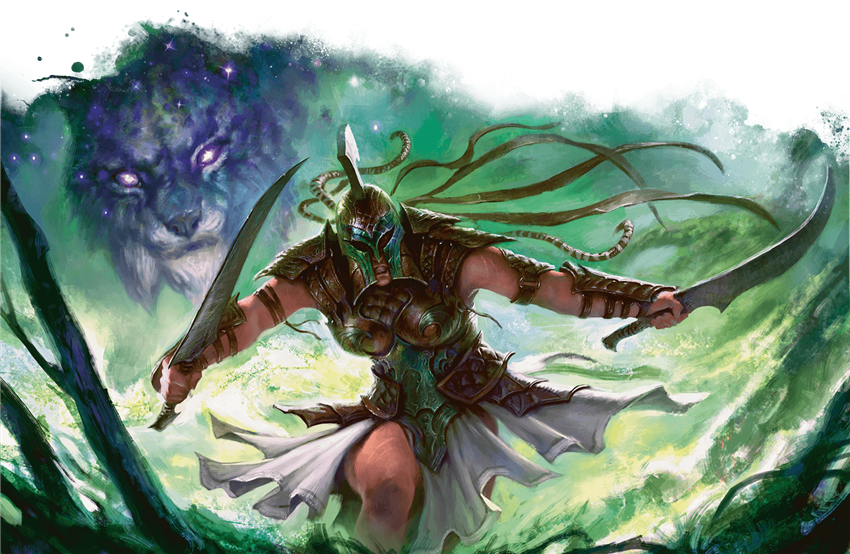
Spells
The paladin also gains access to spells at 2nd level, drawing from their class’s unique spell list. While your spell selection is more limited and you gain access to more powerful spells more slowly than “full caster” classes, you balance it out with your robust combat arsenal. Take this time before you gain your subclass at 3rd level to feel out what your role in the party is. That way, when you do gain your subclass (as well as the host of permanently prepared Oath Spells that come with it), you’ll know what spells your party needs you to have access to on a regular basis.
Fortunately, you can choose a different set of spells at the start of each new day, just like a cleric. The entire paladin spell list is available to you, so you can adapt your spell selection to whatever challenges you think you’ll be facing. Either way, choosing a “standard loadout” of spells that you can rely upon on an average adventuring day is useful. You can prepare a number of paladin spells equal to half your level (rounded down) plus your Charisma modifier. So, if you’re a 2nd-level paladin with a Charisma score of 16 (+3), you can prepare four spells from the paladin spell list. To give yourself a well-balanced loudout, choose two spells labeled OFFENSE, one labeled DEFENSE, and one labeled SUPPORT. Note that this list only includes some spells from the Player's Handbook, so if you want to choose more unusual spells, or have other sources like Xanathar's Guide to Everything, you'll have to do a little self-directed research. This list is just here to get you started if this is your first time playing an Oath of Vengeance paladin.
- Bless (SUPPORT)
- Compelled duel (DEFENSE)
- Cure wounds (SUPPORT)
- Divine favor (OFFENSE)
- Searing smite (OFFENSE)
- Shield of faith (DEFENSE)
- Thunderous smite (OFFENSE)
- Wrathful smite (OFFENSE)
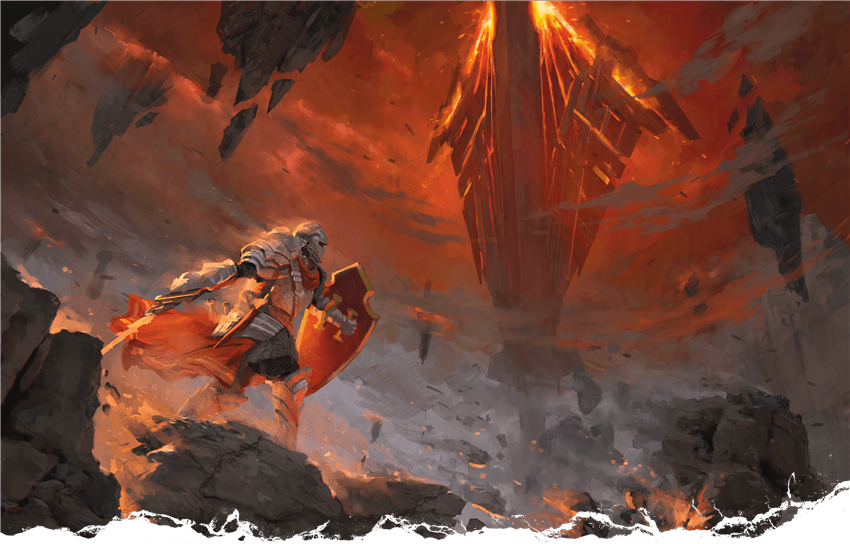
Feats
Once you’ve improved your Strength, Dexterity, or Charisma score to 18 or 20, you can increase your power with a few useful feats. The following feats are good picks for Oath of Vengeance paladins, and will improve your reliability in your own desired area of expertise:
Great Weapon Master. If you wield a big weapon and want to deal massive damage, this is your go-to. It’s less vital to you than a fighter, however, since you have Divine Smite for burst damage. Most paladins would generally rather hit so you can activate your smites than gamble on a bit of extra damage—but since the Oath of Vengeance has a variety of damaging spells to cast rather than smiting, Great Weapon Master can make it easier to deal damage without spending your limited resources.
Polearm Master. You don’t typically use your bonus action for anything except for spells like wrathful smite, so being able to turn it into another attack (and thus, another chance to use your Divine Smite, which doesn’t cost an action to activate) is very attractive.
Resilient (Constitution). Like War Caster (below), this feat makes it harder to lose concentration on your spells by granting you proficiency in Constitution saving throws—while also improving your Constitution score by +1. Its bonus to making saves to maintain concentration isn’t as good as advantage (at low levels), but it gives a broader spectrum of bonuses.
Shield Master. Paladins love fighting with a sword in one hand and a shield in the other, so amping up your shield-using skills makes sense.
Skulker. An unusual feat for paladins to take, this feat is suitable for silent hunters who stalk their prey through darkened streets and caverns. This feat is especially good if you’re playing a Dexterity-focused paladin.
War Caster. This feat suits the paladin playstyle perfectly by making it harder for your concentration to be broken in the heat of battle. Since paladins only gain a few precious spell slots, concentration spells are a good way to stretch their magic as far as possible—so it feels terrible when you cast a concentration spell, only to be hit by a goblin or two next round and lose your concentration from some meager damage.
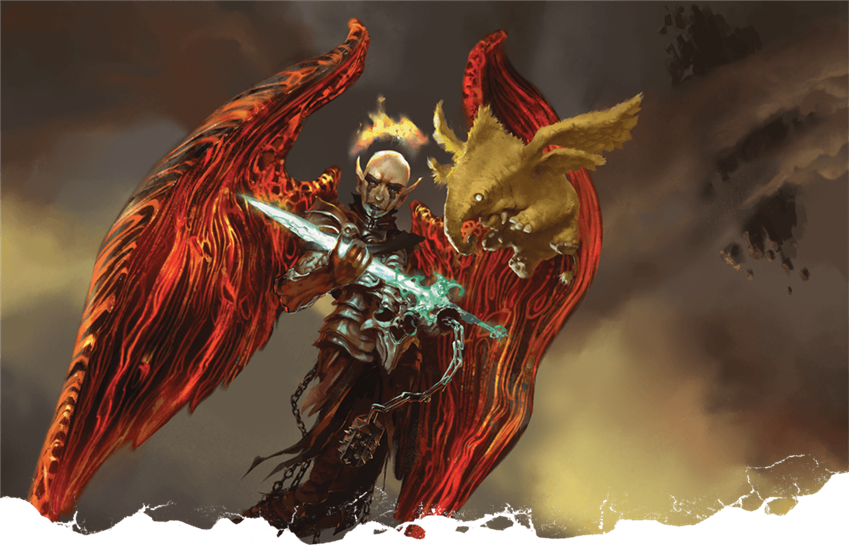
If you want more advice for building a paladin, check out Paladin 101. Have you ever played an Oath of Vengeance paladin? What advice would you give to players that want to play this subclass?
Next week, delve into the darkness of the Underdark with the Gloom Stalker ranger!
Create A Brand-New Adventurer Acquire New Powers and Adventures Browse All Your D&D Content
 James Haeck is the lead writer for D&D Beyond, the co-author of Waterdeep: Dragon Heist, Baldur's Gate: Descent into Avernus, and the Critical Role Explorer's Guide to Wildemount, a member of the Guild Adepts, and a freelance writer for Wizards of the Coast, the D&D Adventurers League, and other RPG companies. He lives in Seattle, Washington with his fiancée Hannah and their animal companions Mei and Marzipan. You can find him wasting time on Twitter at @jamesjhaeck.
James Haeck is the lead writer for D&D Beyond, the co-author of Waterdeep: Dragon Heist, Baldur's Gate: Descent into Avernus, and the Critical Role Explorer's Guide to Wildemount, a member of the Guild Adepts, and a freelance writer for Wizards of the Coast, the D&D Adventurers League, and other RPG companies. He lives in Seattle, Washington with his fiancée Hannah and their animal companions Mei and Marzipan. You can find him wasting time on Twitter at @jamesjhaeck.








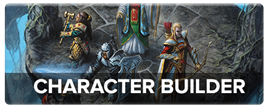
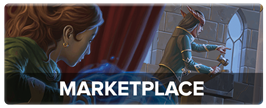
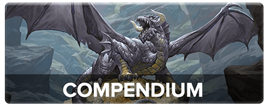
-
View User Profile
-
Send Message
Posted Oct 5, 2020As if it needs to be said aloud, the tools at your disposal give you so many options to up your damage output. Combos like Vow of Enmity > Great Weapon Master > Divine Smite make you a tactical nuke. Throw an applied Hunter's Mark in there to raise your DPR (if you see the battle lasting a few turns to outweigh the benefit of smiting) and you've got yourself a monster.
-
View User Profile
-
Send Message
Posted Oct 5, 2020In the story bit, I can't tell whether I liked or felt apathetic toward the paladin just listing the tenet of vengeance.
-
View User Profile
-
Send Message
Posted Oct 5, 2020The pic shown before the section Fighting Style starts it reminds me about a movie from the 80's, in which the main actor was Sean Connery. The movie was ZARDOZ. Has someone ever seen that movie ?? I see here where this kind of Paladin Oath goes to.
-
View User Profile
-
Send Message
Posted Oct 5, 2020I fell that this is more an evil-aligned subclass, yet paladins are supposed to and mostly are lawful good
-
View User Profile
-
Send Message
Posted Oct 5, 2020MY PLAYERS USE THIS WAY TOO MUCH. As a DM, I really do not like people playing Paladins(especially oath of vengeance) so they can be really great in combat. No one ever comes up with a story beyond “some evil thing killed my parents and I want vengeance on all evil”. I need advice on how to deal with that tendency.
-
View User Profile
-
Send Message
Posted Oct 5, 2020I am a fan of the Sentinel feat with a Vengeance Paladin. Slowing them to zero movement after an AoO has come through in the clutch a few times for me.
-
View User Profile
-
Send Message
Posted Oct 5, 2020Yeah... Powergamers with unrealistic stats/poor backgrounds really peeve me too
-
View User Profile
-
Send Message
Posted Oct 5, 2020WHAT IS IT WITH THE FIRST 2ND 3RD POST THING!!!!!
-
View User Profile
-
Send Message
Posted Oct 5, 2020personally I liked it. It resonated with how I deel about some of the oaths and promises I have made. I know the words and thier meaning. thye are a part of me.
-
View User Profile
-
Send Message
Posted Oct 5, 2020I don't understand how Hunters Mark can be as good as Divine Smite. Surely it having a chance to be disrupted by being hit, which should happen a lot to a paladin, and the chance of you missing and doing no extra damage makes it inferior to Divine Smite, even if it can do more damage.
-
View User Profile
-
Send Message
Posted Oct 5, 2020It's a slower, more consistent way to play. A 3rd-level paladin has three 1st-level spell slots. Let's take a roughly 3-round-long combat encounter. The paladin wants to conserve their spell slots, because they know there will be more combat encounters over the course of the day.
Assuming this paladin has 16 (+3) Strength, wields a greatsword, attacks all three rounds, and hits with every attack, let's see the breakdown for Divine Smite versus hunter's mark. Their average weapon damage is 10 (2d6 + 3) each round.
Divine Smite adds 2d8 radiant damage, so if this paladin smites once in three rounds, the damage looks like this:
Hunter's mark adds 1d6 damage per hit, so if the paladin marks a foe and hits it all three rounds, the damage looks like this:
The difference is marginal at low levels, but long combats tend to favor hunter's mark. However, once you start making more attacks, either by dual wielding or once you get the Extra Attack feature, hunter's mark becomes markedly more powerful, since it deals additional damage on every single hit. If you have multiple combats, the long duration of hunter's mark means that it could deal even more damage over the course of its hour-long duration.
-
View User Profile
-
Send Message
Posted Oct 5, 2020just why and one of the people i play with was one and it was fun
-
View User Profile
-
Send Message
Posted Oct 5, 2020Aerostar: For oath of vengeance, have them detail exactly who killed their parents and why. Was it an evil temple, a thieves guild, some dark conspiracy? Perhaps they possessed some crucial piece of knowledge or magic an enemy needed. Then give the PC multiple quests to discover who did it (maybe they need the help of a rogue/inquisitive or a wizard of the divination school), why they did it, where they are, and what needs to be done to capture or kill them. Are the murderers part of a major plot in the campaign or a side quest you can ramp up to get things moving or change the pace? Perhaps the death of the parents was part of some larger plot that leads the party to its major villain?
For other Paladins, lay duties upon them that match their oath, religion, race, and background. In one campaign, set in Eberron, our war forged paladin who had taken the oath of ancients was tasked with finding a way to relieve the suffering of the war forged who had fought in the war and lost one or more limbs. We're still trying to figure out how to completely satisfy that one, since the manufacture of war forged is now forbidden. (Spare parts are hard to come by).
Remember, you are the DM and you design the setting and challenges.
-
View User Profile
-
Send Message
Posted Oct 5, 2020Personally, I am excited for the next week's article, but this one was good as well. Just one question, would anyone recommend Volo's guide to monsters, or Mordenkainen's tome of foes?
-
View User Profile
-
Send Message
Posted Oct 5, 2020As a DM, I find both invaluable. Even if you don't want the source material regarding Orcs (Volo's) or Devils (MToF), the additional monsters are useful. Even if you don't directly use the source material, you can certainly get ideas that are useful for your campaign.
As a player, MToF isn't useful to me. Volo's gives some great additional races to play, but only one person in the group really needs to have the book for that.
-
View User Profile
-
Send Message
Posted Oct 5, 2020It depends on what the focus of your campaign is. For most games, I recommend Volo's, as it adds lots of monsters that suit nearly every environment and has a bunch of additional races. If you want to go into planar conflicts and ancient enemies, like Descent into Avernus, I would recommend Mordenkainen's.
Overall, probably Volo's. It suits more campaigns and more styles of play.
-
View User Profile
-
Send Message
Posted Oct 6, 2020Way of Mercy meets Oath of Vengeance
-
View User Profile
-
Send Message
Posted Oct 6, 2020As a frequent player of paladins, I've never chosen this subclass purely because of the "what now?" concept. To explain, if I were a Oath of Vengeance paladin, and I got my revenge, what would happen then? They've fulfilled their oath, and that raises some questions. Do they lose anything (such as magical power)? Do they make a different oath? What do they do then, because all they've wanted, they've achieved. Of course, this is a perfect time for the player to retire this character, but say I wanted to continue playing them? What would they do? Any answers would be very helpful.
-
View User Profile
-
Send Message
Posted Oct 6, 2020Trying to find a loophole for you. Take note of the tenets. Most have to do with eliminating your sworn foe, but the Restitution tenet has a way around that. I'm sure the sworn foe is an integral part of the campaign or at least a major player in world events. At least as a DM I'd want my player's main motivation for adventuring to be important enough to last a while in the campaign. Anyway, that enemy's actions most likely have rippling consequences in the world. Maybe the paladin now spends their days un doing the evil that their sworn foe has wrought on the world. "An arch-lich killed my tribe. I was the lone survivor. After 20 some years of fighting evil, I finally vanquished it. However, his mark has been left on the world as his undead minions still roam the land....etc, etc, etc."
Fight the Greater Evil. Faced with a choice of fighting my sworn foes or combating a lesser evil, I choose the greater evil.
No Mercy for the Wicked. Ordinary foes might win my mercy, but my sworn enemies do not.
By Any Means Necessary. My qualms can’t get in the way of exterminating my foes.
Restitution. If my foes wreak ruin on the world, it is because I failed to stop them. I must help those harmed by their misdeeds.
-
View User Profile
-
Send Message
Posted Oct 6, 2020The best way to avoid this dilemma is to make your target nebulous, such as "chaotic wizards" instead of "Halaster" or "demonic influence" instead of "Demogorgon". Not only are these "War on Terror"-esque threats that will never really go away, they are also nice broad storymaking exercises (e.g., What happens when you encounter a Chaotic Good Wizard who is nonetheless misusing his power without sanction? What happens when your interrogation victim admits he consorted with demons, but did so for a good cause?).
This also helps with the narrow backstory issue, where players are pigeonholed into "I'm seeking revenge on so-and-so because they killed my parents". It tends to take a bit more investment to go after an existential threat rather than one person.